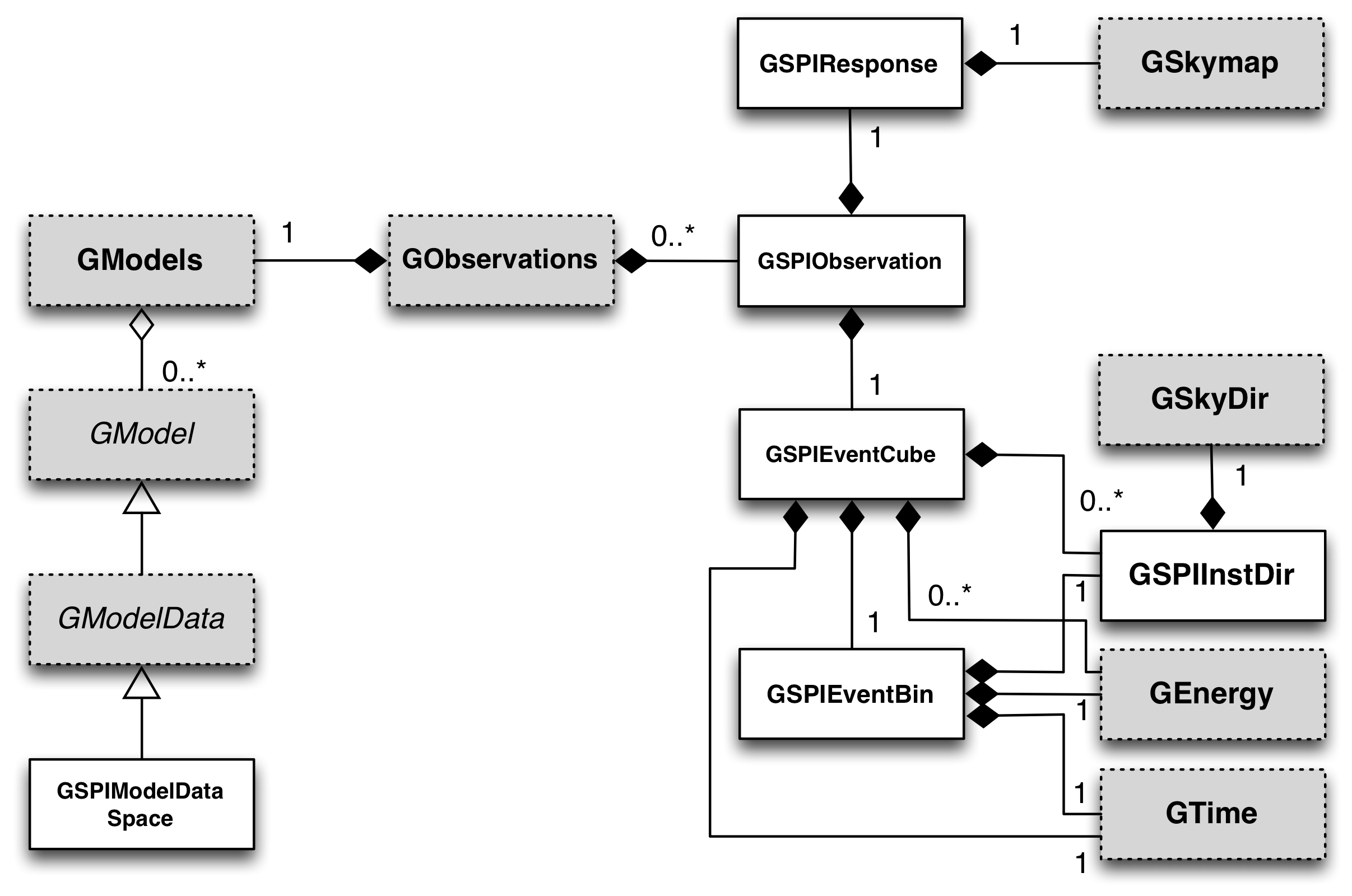INTEGRAL/SPI interface¶
Overview¶
The SPI module supports the Spectrometre on INTEGRAL, an instrument for low-energy gamma-ray astronomy that currently flies on ESA’s INTEGRAL satellite. The satellite was launched on 17 October 2002 and operates since then in an elliptical orbit of about three days. The SPI telescope operates between 20 keV and 8 MeV and is equipped with 19 high-resolution Germanium detectors. It uses a coded mask to image sources in a field-of-view of about 16 deg in diameter (fully coded). The angular resolution is about 2 deg, the spectral resolution is about 2 keV.
The following figure presents an overview over the classes of the SPI module and their relations.

SPI module¶
The central object is a SPI observation, implemented by the GSPIObservation class. The class holds a SPI event cube that is implemented by the GSPIEventCube class. The event cube spans the full SPI data space which is 3-dimensional and spanned by a time axis (defined as the pointing sequence of the telescope), a detector axis and an energy axis. A single bin of the event cube is implemented by the GSPIEventBin class. Each event bin contains the instrument direction, implemented by the GSPIInstDir class, that is defined by the pointing direction of the telescope at the time that the event was recorded and the detector number in which the event occured. In addition, the event bin contains the energy and trigger time of the event.
The GSPIObservation class holds furthermore the Instrument Response Function (IRF) that is implemented by the GSPIResponse class. Internally, GSPIResponse stores the IRF as a multi-dimensional sky map.
To model the instrumental background the GSPIModelDataSpace class exists which defines scaling factors of a model factor for various data space sub regions. Sub regions can be defined in all three data space dimensions.
